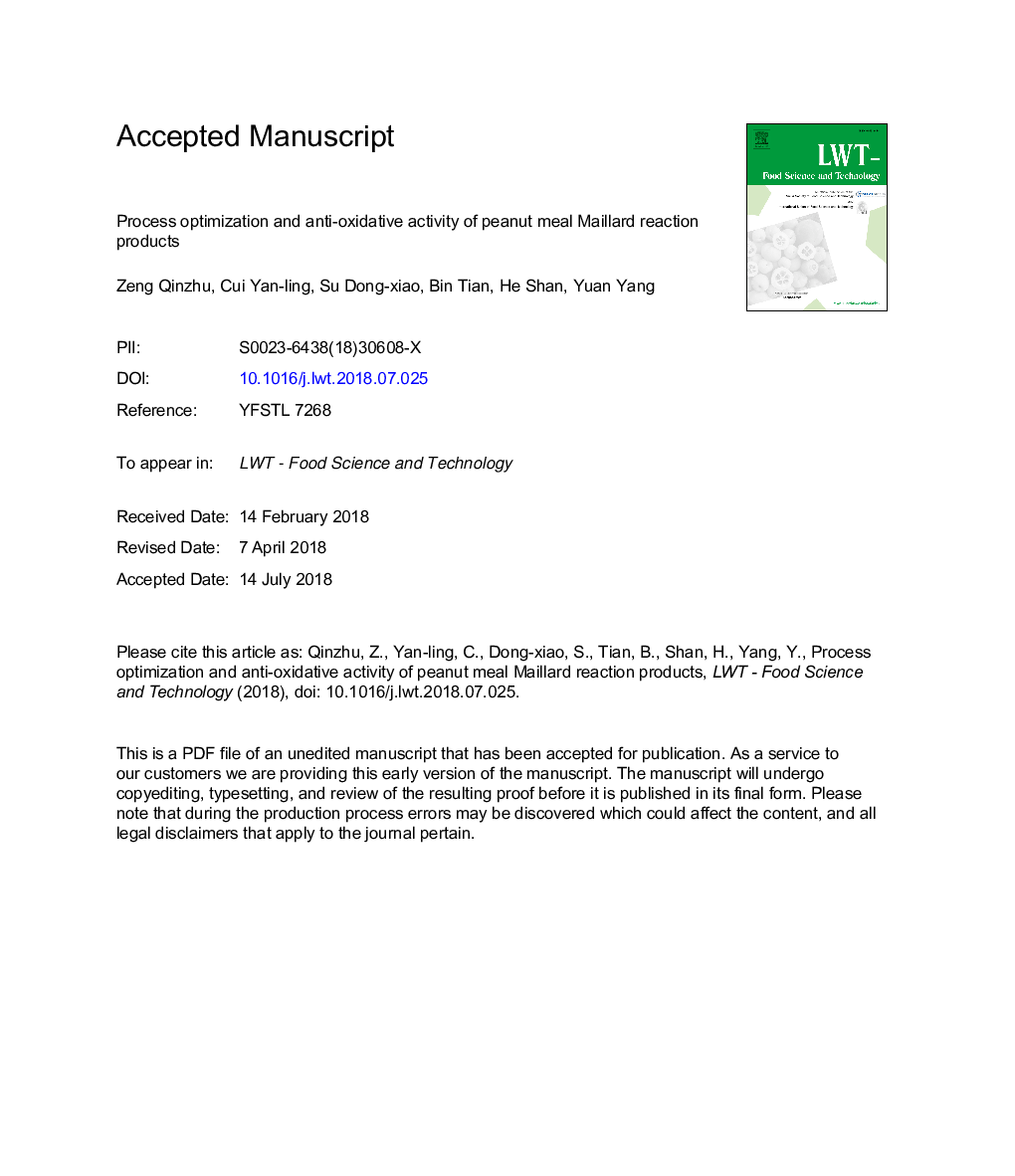| Article ID | Journal | Published Year | Pages | File Type |
|---|---|---|---|---|
| 8890261 | LWT - Food Science and Technology | 2018 | 37 Pages |
Abstract
By applying bacterial and enzymatic processes, peanut meal, the by-product of peanut oil meal production, was used to create the value-added product - peanut meal hydrolysates in this study. The flavor of peanut meal hydrolysates was enhanced through the Maillard reaction. The optimized processing conditions for producing peanut meal Maillard reaction products (MRPs) with flavor enhancement were determined as a processing temperature of 115â¯Â°C, a processing time of 35â¯min, an initial pH of 7, and an initial xylose concentration of 1% (w/v). The anti-oxidative activities of peanut meal hydrolysates and peanut meal hydrolysate MRPs were compared via the methods of DPPH radical scavenging activity, hydroxyl radical scavenging radical activity, and lipid peroxidation inhabitation. All these 3 methods confirmed the enhanced anti-oxidative activity of peanut meal hydrolysates after the Maillard reaction. Gas chromatography-mass spectrometry (GC-MS) analysis determined that the reason for this enhancement was due to an increased percentage of anti-oxidative compounds, mainly phenolic compounds (from 70.61% to 92.39%), along with other compounds such as Propylthiouracil, hexahydropyrrolo [1,2-a]pyrazine-1,4-dione, and butyric acid.
Keywords
Related Topics
Life Sciences
Agricultural and Biological Sciences
Food Science
Authors
Zeng Qinzhu, Cui Yan-ling, Su Dong-xiao, Bin Tian, Yuan Yang, He Shan,
